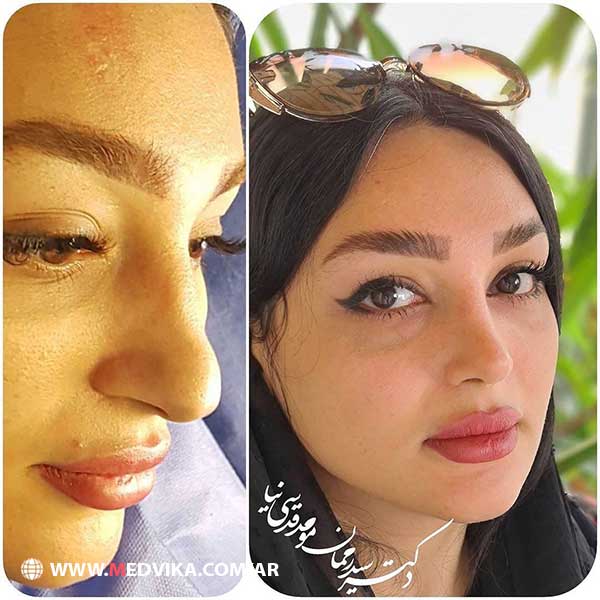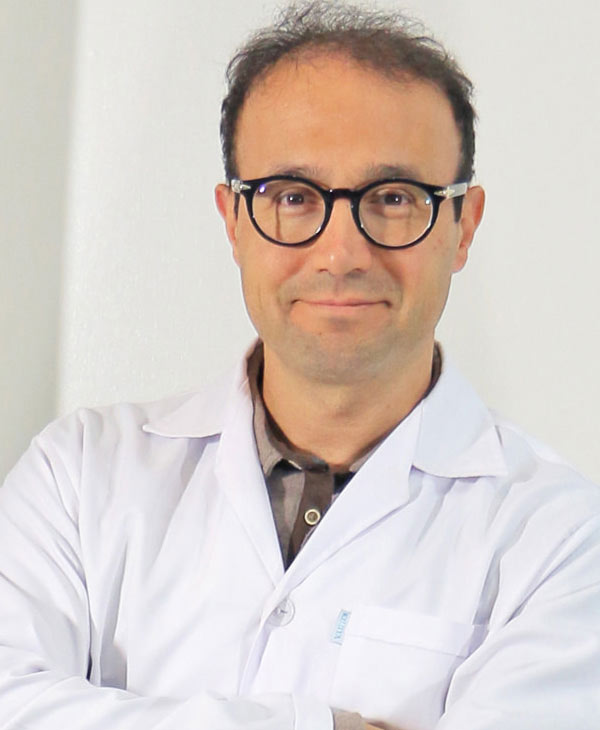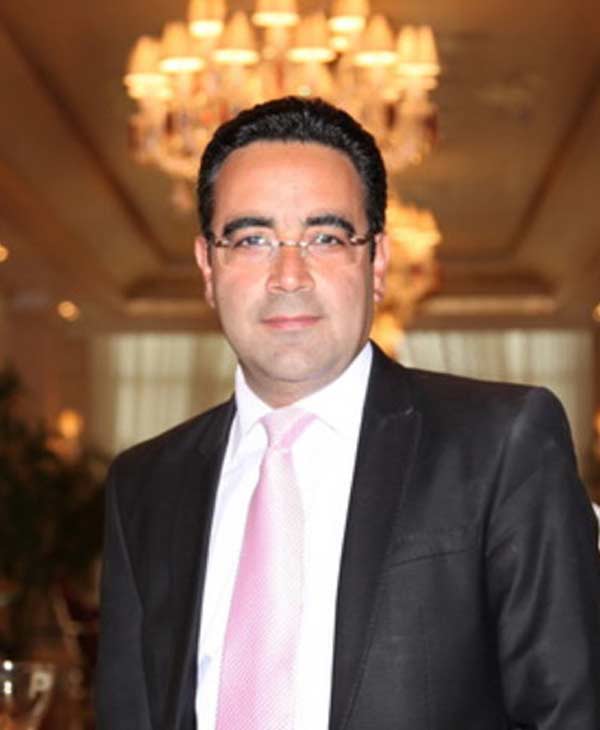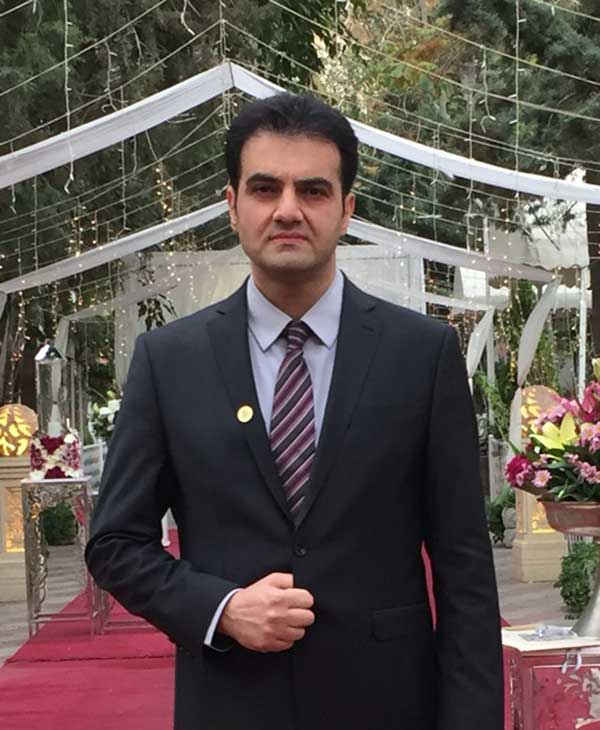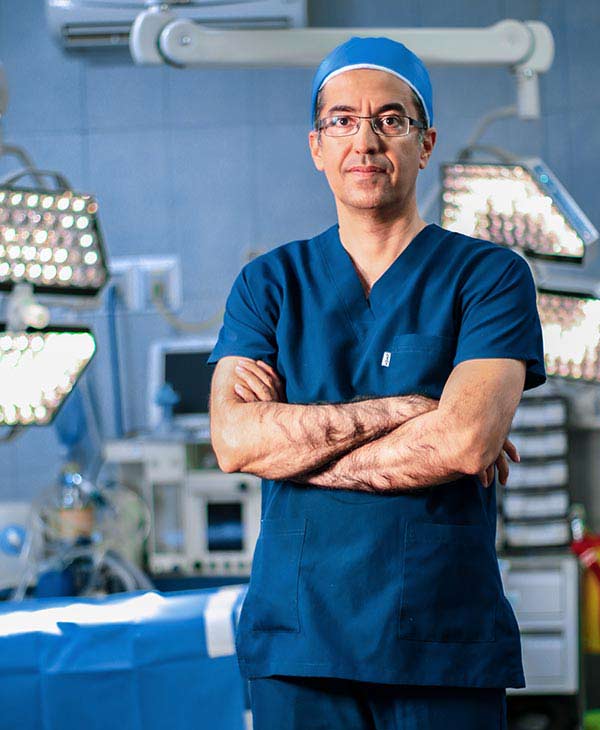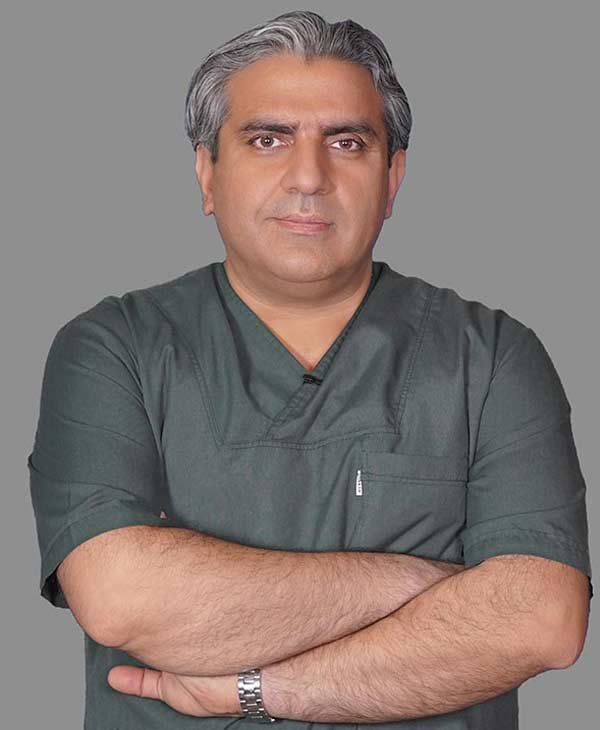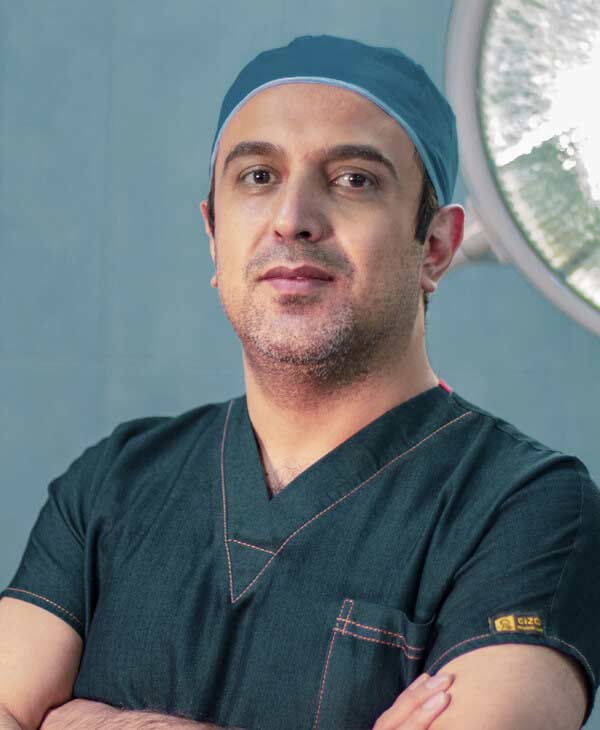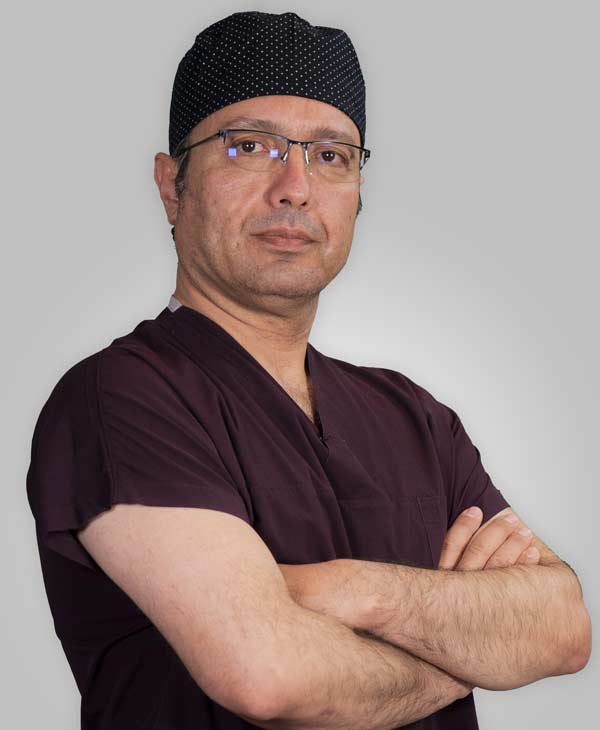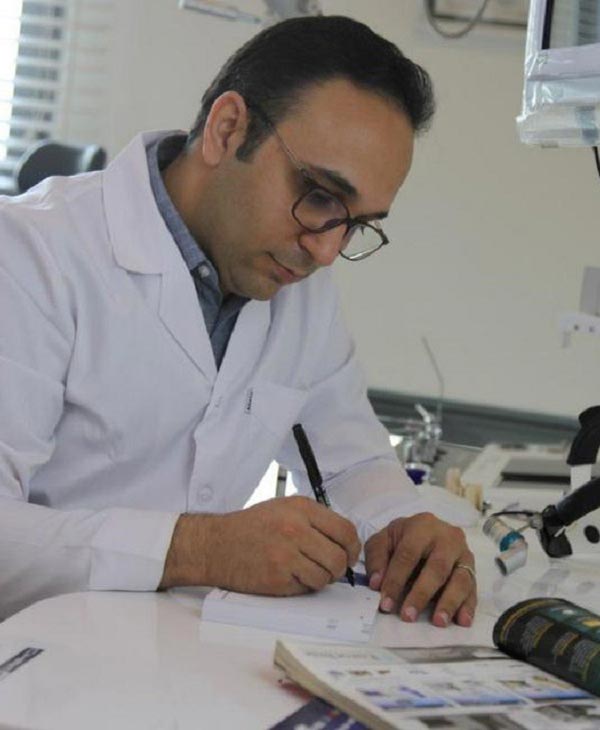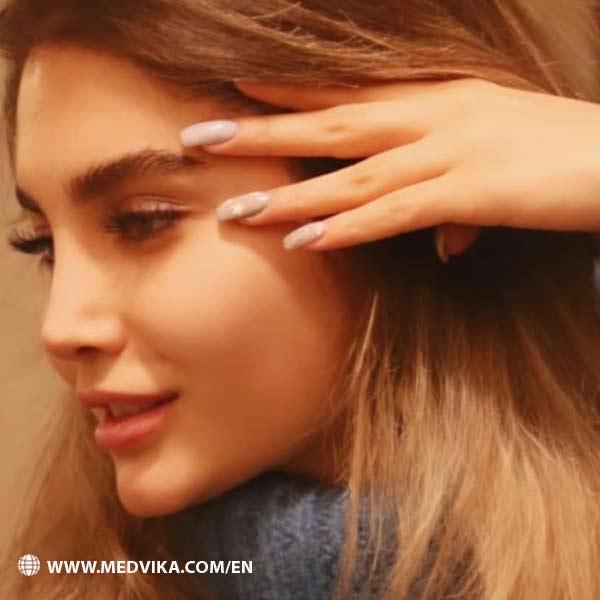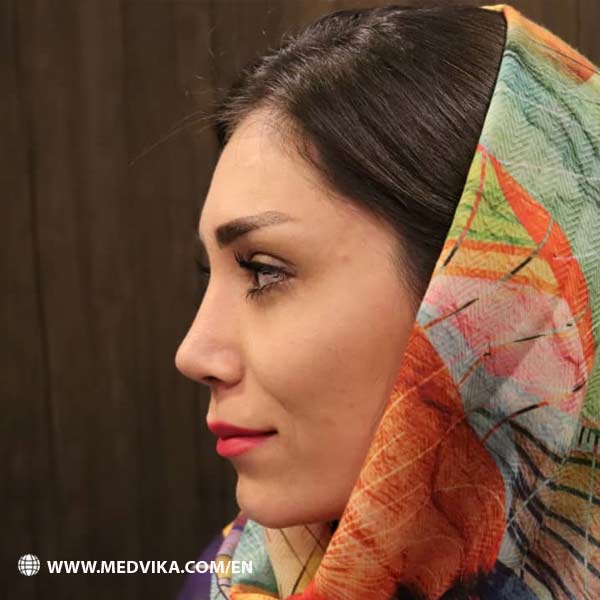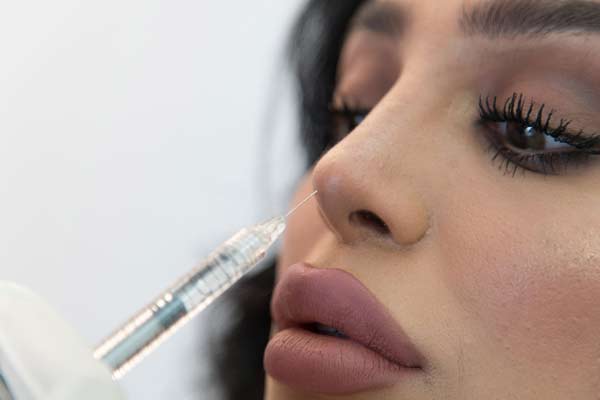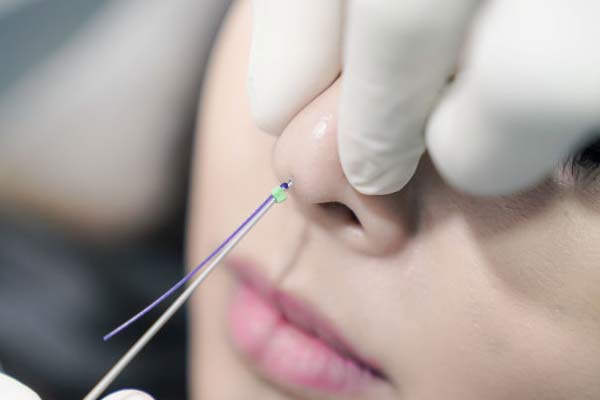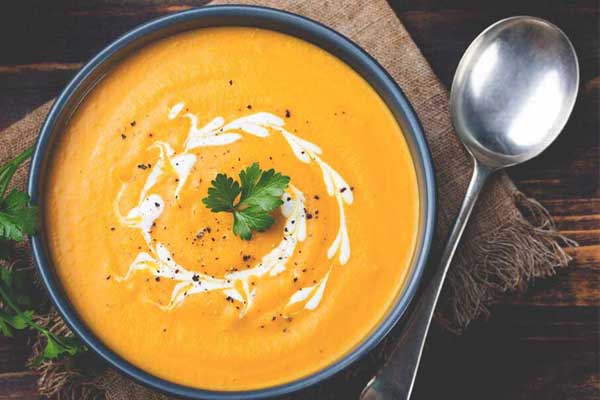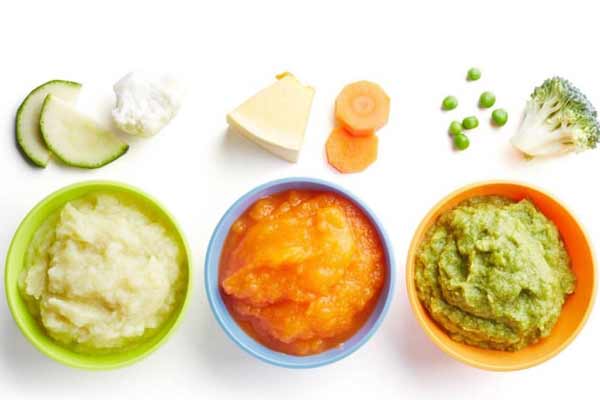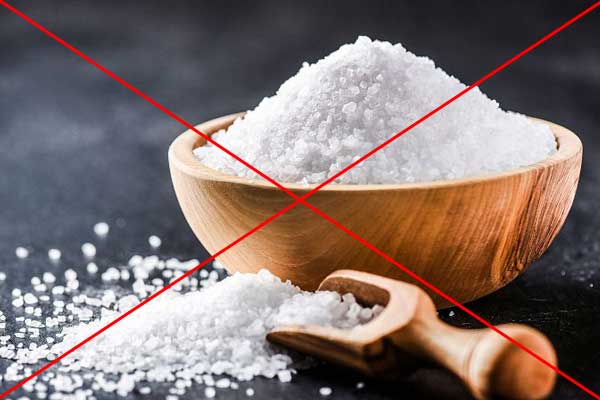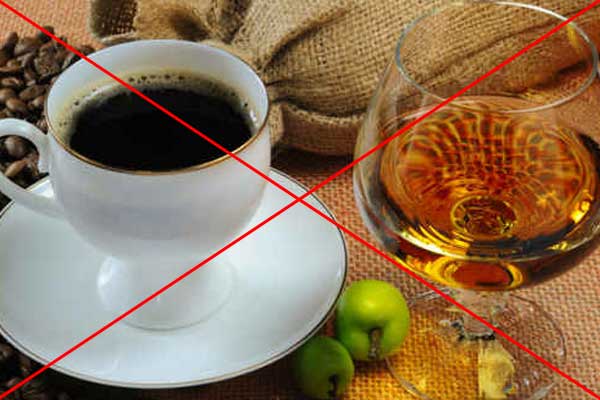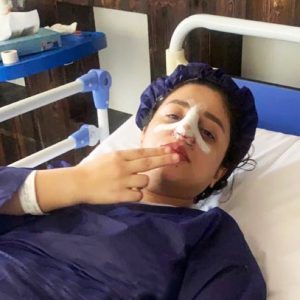
Rhinoplasty in Iran |Best Surgeons + cost 2022 | medvika
2651 ViewsRhinoplasty in Iran . Due to the staggering costs of cosmetic surgeries in some countries, many people opt to travel abroad to undergo these procedures. According to ISAPS, rhinoplasty is among the 5 most popular cosmetic surgeries in the world and many people are looking for the best country to perform this surgery. Safety, cost-effective services, and experienced surgeons are the most significant reasons that make Iran one of the most popular destinations for rhinoplasty. Although traveling abroad for rhinoplasty on your own seems stressful, there is no reason to worry. Medvika will be by your side in all pre-operative and post-operative phases of your rhinoplasty in Iran.
Rhinoplasty in iran price 2022
Rhinoplasty in Iran , frequently called nose job in Iran , is one of the most common types of plastic surgery that can be made for an aesthetic or functional purpose. Rhinoplasty in Iran could be performed by two groups of surgeons: ENT surgeons and plastic surgeons.
| Surgeons for Rhinoplasty in Iran | Primary Rhinoplasty Prices | Revision Rhinoplasty Prices |
| Dr. Shahiyar Yahyavi, Tehran | $3500 | $4000 |
| Dr. Alireza Mohebbi, Tehran | $3500 | $4000 |
| Dr. Moghaddamfard, Tehran | $2800 | $3200 |
| Dr. Mehdi Bakhshaei, Mashhad | $2000 | $2500-2800 |
| Dr. Ehsan Khadivi, Mashhad | $2000 | $2500 |
| Dr. Karim Jalaeian, Mashhad | $1700 | $2000 |
| Dr. Kamran Kavianifar, Mashhad | $1800 | $2300 |
| Dr. Rahman Movahed, Mashhad | $1300 | $1700 |
| Dr. hamidreza rasti | $1700 | —— |
| Dr. Elham imani | $1100 | —— |
The Most Experienced Iranian Nose Surgeons and The Prices of Their Surgeries
Best rhinoplasty surgeon in iran (best nose job doctors in iran)
who is the best nose job doctor in Iran Tehran or Mashhad? Below is the list of the most experienced Iranian nose surgeons in Tehran and Mashhad with the prices of both primary and revision rhinoplasty.
1- best rhinoplasty doctors iran tehran
Dr. Shahiyar Yahyavi , Tehran, Iran
Dr. Alireza Mohebbi , Tehran, Iran
Dr. Moghaddamfard, Tehran, Iran
2- best rhinoplasty doctors iran mashhad
Dr. Mehdi Bakhshaei , Mashhad, Iran
Dr. Ehsan Khadivi , Mashhad, Iran
Dr. Karim Jalaeian , Mashhad, Iran
Dr. Kavianifar , Mashhad, Iran
Dr. Movahed , Mashhad, Iran
Dr.Imani, Mashhad, Iran
Nose Job in Iran: Itinerary
Arrival at Airport:
Welcome to Iran! When you arrive at the airport, our guide is waiting for you. He/She will pick you up and take you to the previously arranged hotel. You will check-in immediately.
Day 1: Visiting Your Surgeon
Our guide will transfer you to the clinic for an interview with your surgeon. Medical tests and pre-operation images required for the rhinoplasty surgery will also be performed. Then you will be transferred back to the hotel.
Day 2: The Surgery Day
You will be transferred from the hotel to the hospital by our guide. Then you will be prepared for the procedure. You have another chance to review your expectations with your surgeon before the surgery. The operation will be performed and after post-op recovery, the doctor will give you all the necessary instructions. You will be discharged from the hospital and transferred back to the hotel via a private car.
Day 3: Resting in the Hotel
You are advised to rest in the hotel and take post-op medications. Be careful with your diet.
Day 4, 5: Still Resting
Like the previous day, you are going to rest and take your medicines. You can also start for a daily walk in your room. Your condition will be monitored by the doctor’s assistant.
Day 6: Preparing for Nose splint Removal
You have to take a shower and get prepared for the nose splint removal. You will be transferred to the surgeon’s office via our guide. The surgeon (or his/her assistant) will remove your nose splint and give your post-op instructions in detail (dos and don’ts and how to tape and clean your nose). You will be transferred back to the hotel to get ready for your next day’s flight!
Day 7: Homecoming
Today is your last day in Iran! We will check out your room and transfer you from the hotel to the airport. Medvika wishes you a good flight. However, in case of any problem you are welcome to contact us through communication channels.
*This is a rough estimation and may be changed due to the circumstances.
Why Iran is The Best Country for Nose Job?
In the following, we will check the reasons why Iran is the most popular destination for cosmetic surgeries and is called the nose job capital of the world. Tehran, Shiraz, and Mashhad are among the most popular cities in Iran for performing cosmetic procedures.
– Safety
Iran is a safe country with numerous cultural tourist attractions, beautiful cities, spectacular architecture, friendly and hospitable people, and fabulous food. Traveling to Iran gives you the chance to combine your cosmetic procedure with a nice tourist destination. In addition, Iran has numerous well-equipped and luxurious hotels with many touristic facilities that guarantee your convenience during your 7-day recovery period.
– Cost-effective Services
Due to the low value of the Iranian currency compared to the dollar, full rhinoplasty in Iran is currently about 90% cheaper than the same surgery in the United States and 30–70 % than other destinations. It should be noted that this price difference does not mean the low quality of provided services and all procedures are performed in the most equipped clinics and hospitals by experienced, qualified surgeons.
– Experienced Nose Job Doctors in Iran
Most nose job doctors in Iran receive their medical degrees from well-known universities in Iran, Europe, and the United States. In addition, the high demand for rhinoplasty in Iran has led to an increase in the number of experienced surgeons in this field. According to cosmetic surgery statistics, 150,000 rhinoplasty surgeries are performed annually in Iran with a success rate of above 95%.
Why choose Medvika for cosmetic surgery in Iran?
• Due to the high sensitivity of body cosmetic surgeries, Medvika proposes to you the most qualified, experienced surgeons in Iran, who are selected based on their success rate of previous surgeries.
• Medvika will be by your side from the first moment of deciding on any cosmetic procedure. You can count on us in all pre-operative and post-operative phases of your surgery.
• There are several ways to get advice from the Medvika team, including the website and social networks such as Facebook, Instagram, and WhatsApp, where you can ask questions and get help at any time of the day. You will also be able to easily book a free consultation with your favorite doctor.
What do we offer in our rhinoplasty packages?
• Rhinoplasty
All services related to the rhinoplasty, including doctor visits, medical tests, and pre-operative photography, bookings of the surgery, medications prescribed by the doctor, post-operative care, and follow-up assistant.
• E-Visa Authorization Code
If you need a visa to travel to Iran, we will help you get your visa authorization code. Note that the fee for your visa depends on your home country.
• Airport and Inter-City Transfer
Airport pick-up and drop-off transfer, inter-city transfer between the hotel, clinic, and hospital. If you decide to visit the city before your surgery, we can help you too.
• Accommodation
7 nights stay in a free hotel, However, if you have a specific hotel in mind, it is possible to book the hotel you are considering. Note that in this case the cost of the hotel will be added to your package.
• Support Services
24/7 customer support, interpreter, SIM, and Internet
How Would a Nose Job Change Your Face?
• Changing the size of the nose in proportion to other facial features
• Removing a bump and straightening of the bridge
• Reshaping of the nose tip
• Narrowing of the nostril width
• Changing the angle between the nose and the upper lip
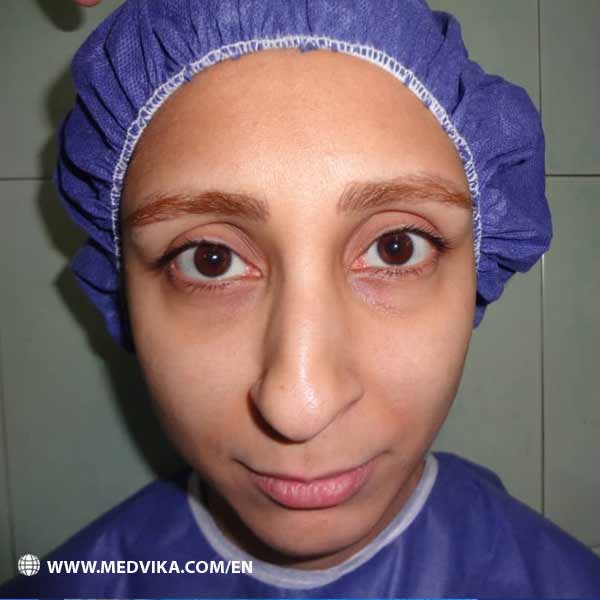

Different Techniques of Nose Job in Iran
Closed Rhinoplasty in Iran
In closed rhinoplasty, no external incisions are made on the sides of the nose and the incisions are made completely hidden within the nostrils. This technique limits visibility and access to the underlying structure and is suitable for nasal structures that need minor changes. The closed rhinoplasty approach has the advantages of less swelling, less scarring, and a shorter recovery time.
Open Rhinoplasty in Iran
The open rhinoplasty technique is performed when the surgeon needs complete access to the nasal tissue. In addition to the internal incisions in the nostrils, he/she makes an external incision in the columella (the soft tissue between the two nostrils, which is made up of skin and lower lateral cartilage).
The scar left behind will fade with time and is barely visible. The main advantage of the open technique is achieving higher accuracy and better visualization during the surgery.
Most nose job surgeries are usually performed by open technique, however determining the most suitable method depends on the patient’s nasal dissection, personal characteristics, and the patient’s expectations.
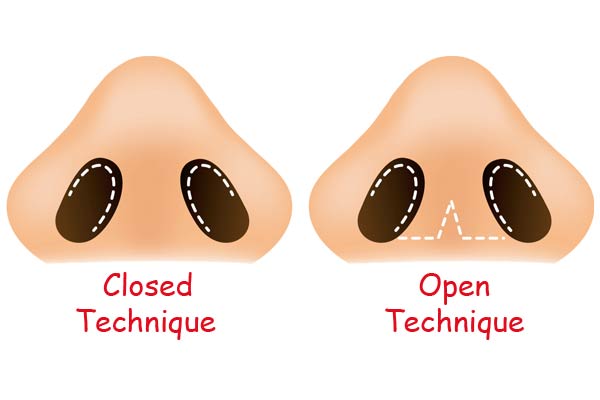
Types of Nose Surgery in Iran
Septoplasty in Iran
Septoplasty is a surgical procedure to correct a deviated septum. A Septum is a wall of bone and cartilage that divides the nose into two separate nostrils. Nasal septum deviation could be a congenital disorder or caused by injury. People with deviated septum suffer from breathing difficulties, frequent nosebleeds, and headaches. During septoplasty in Iran, the deviated nasal is repositioned to the middle of the nose. The septoplasty is performed only for the purpose of correcting the nasal septum, which costs less than rhinoplasty.
Nasal Polyps Surgery in Iran
Polyps are soft, painless, noncancerous growths that form in the nasal passages. Nasal polyps result from chronic inflammation. Conditions often associated with nasal polyps are recurring infection, asthma, allergies, certain immune disorders, or drug sensitivity. A person with nasal polyps suffers from persistent stuffiness, breathing difficulties, snoring, and a runny nose. Nasal polyp surgery in Iran removes polyps from the lining of the nasal passageways. The cost of nasal polyps removal surgery depends on the number of polyps and their complexity. Nasal polyps surgery is usually performed at the same time as rhinoplasty, sinus endoscopy, or septoplasty.
Septorhinoplasty in Iran
Septorhinoplasty in Iran is an operation to correct a deviated septum (Septoplasty) and improve the appearance of the nose (Rhinoplasty). Certainly, septorhinoplasty costs more than septoplasty.
Tip plasty in Iran
Tip plasty is a type of rhinoplasty that refers to a cosmetic procedure that corrects any deformities in the nasal tip. In general, tip plasty is a great solution when other parts of the nose have no problem but you are unsatisfied with the tip of the nose.
Revision Rhinoplasty in Iran : Choosing the best revision rhinoplasty surgeon in Iran
Revision rhinoplasty in Iran or secondary rhinoplasty applies to any patient who has previously undergone rhinoplasty and is unhappy with the results. This dissatisfaction may be due to the appearance or the function of the nose. Cartilage grafts are commonly used in a revision rhinoplasty for nasal skeleton reconstruction. Revision rhinoplasty is considered the most challenging type of nose surgery in Iran. Because this surgery must be performed on sensitive and vulnerable nasal tissue, it costs more than the primary rhinoplasty.
Fleshy Nose Surgery in Iran vs. Bony Nose Surgery in Iran
Noses are usually divided into fleshy and bony categories based on the skin thickness and the amount of cartilage. Although this classification has no scientific basis, surgeons utilize it for better communication with their patients.
A fleshy nose is also known as a meaty nose has thick skin. The cartilage is weak and the main part of the nose consists of skin, fat, and plenty of sebaceous glands. Other features of a fleshy nose include:
• Oily skin with plenty of pores
• Downward and bulbous tip
• Wide nostrils
Bony noses have thinner skin and stronger tissue and cartilage than fleshy noses. Bony noses are usually hump-shaped which is more apparent in people’s profiles.
Fleshy nose surgery is more difficult than bony nose surgery and requires more skill due to thicker skin and less bone and cartilage.
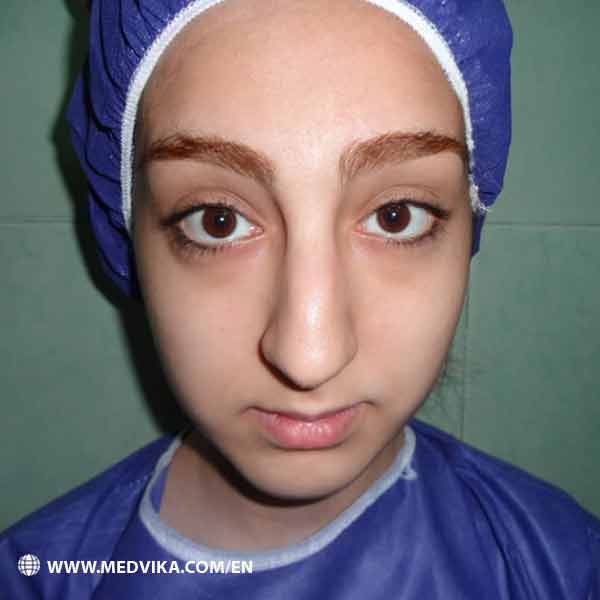
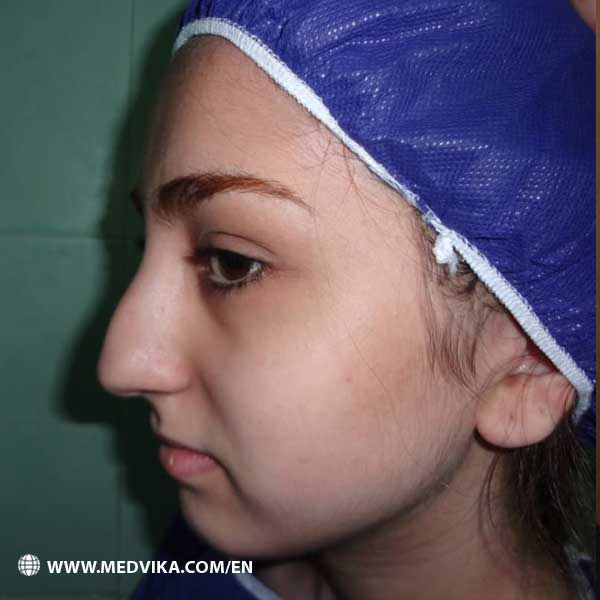
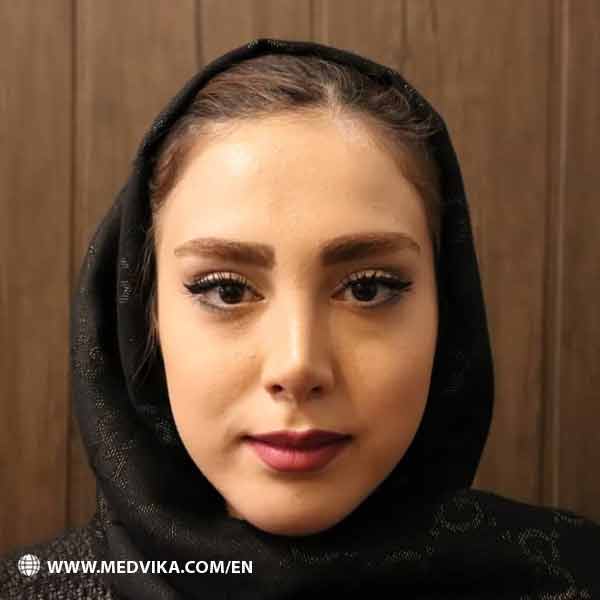
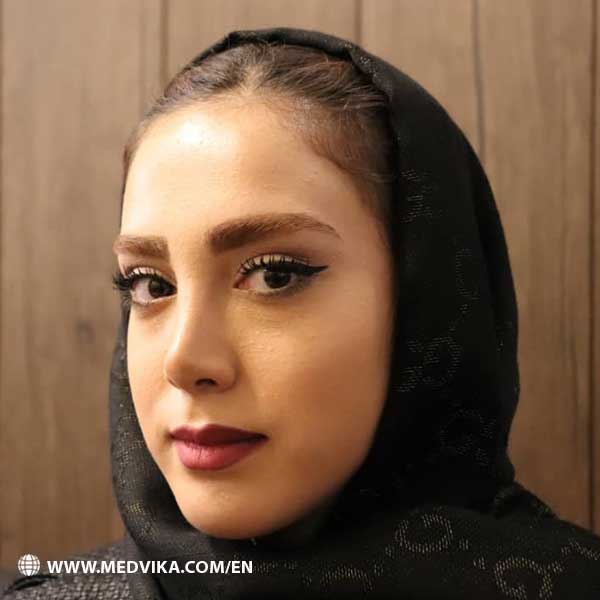
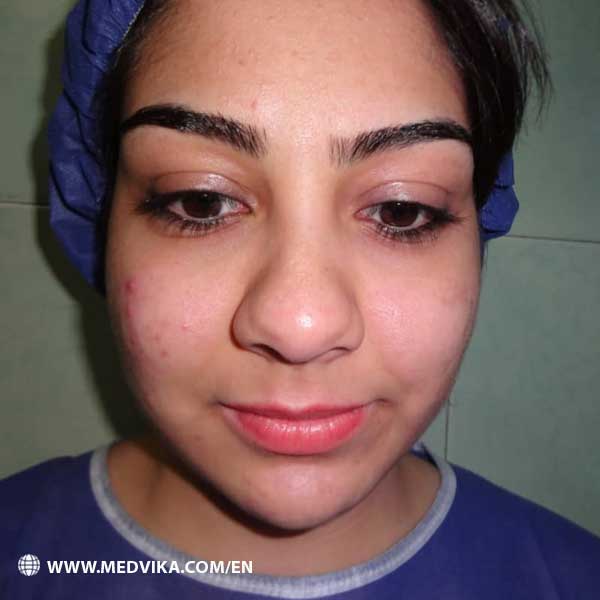
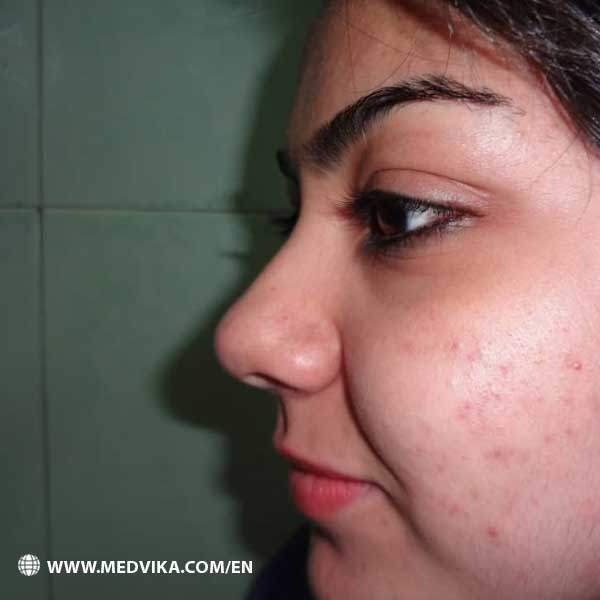
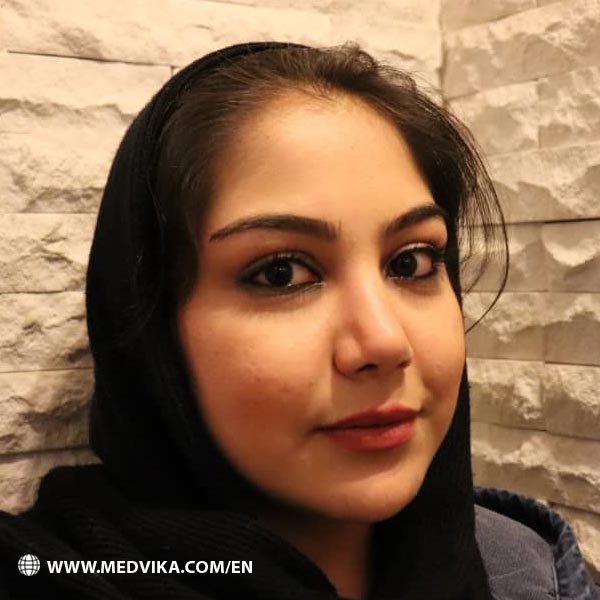
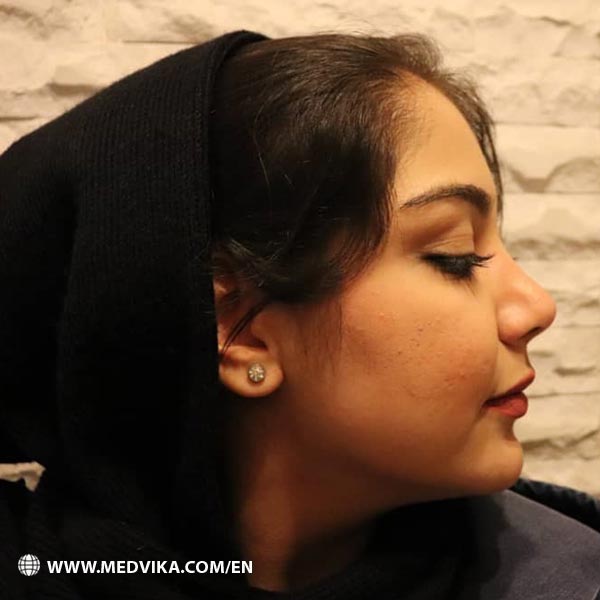
Common Nose Job Models in Iran
The purpose of the nose job is to eliminate nose defects as much as possible and create an ideal nose appearance. However, not all people like the same shape, and this has led to different models for nose job surgery. It is important to know that in addition to the patient’s expectation, the surgeon also considers other factors including nose anatomy and its proportion to other facial features. Three models of rhinoplasty are common in Iran, which are: natural nose job, fantasy nose job (dolly nose), and semi fantasy nose job.
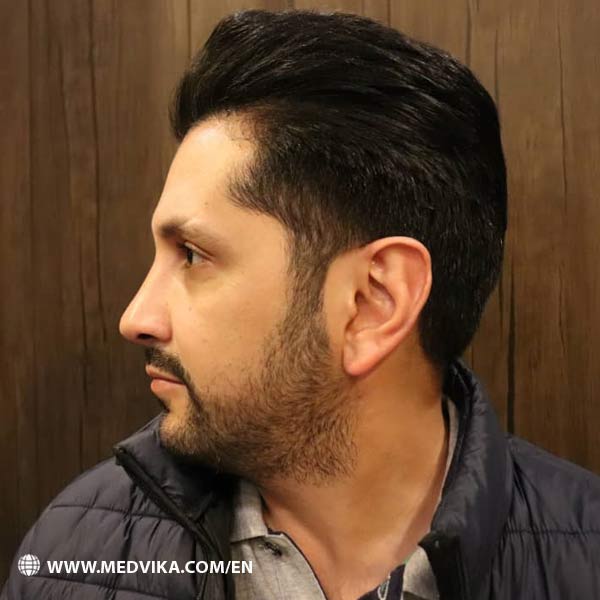
Natural Nose Job in Iran
In a natural rhinoplasty model, only small changes are applied to the nose shape. In this model, the nasal bridge is straight (not curved) and the tip of the nose is not upward, so the angle between the nasal tip and the upper lip is about 90 degrees.
Currently, this model of rhinoplasty in Iran is more popular among men.
Fantasy Nose Job in Iran
In a fantasy rhinoplasty model, the nose is shaped smaller more than usual, the tip of the nose is completely raised toward up and the angle between the nose and the upper lip is about 105 degrees.
A Fantasy nose job is not suitable for those who have a wide face. This model is ideal for women or girls with small faces and bony noses.
Semi Fantasy Nose Job in Iran
This model has a form between the natural model and the fantasy model. The curve of the bridge in the semi fantasy model is slighter than the fantasy model.
And the angle between the nose and the upper lip is between 90 to 105 degrees.
Non surgical rhinoplasty in Iran
Non surgical rhinoplasty in Iran, also known as a non surgical nose job in Iran includes nose fillers injection, thread nose lift, and plasma jet nose. These methods are not recommended by doctors due to their low impact and dangerous side effects. Rhinoplasty is currently the safest way to permanently change the shape of the nose.
Nose Fillers Injection in Iran
Nose fillers injection or liquid rhinoplasty consists of injecting dermal filler ingredients, such as hyaluronic acid, underneath the skin to change the shape of the nose for up to 6 months. This method could be used for any part of the nose like the bridge, tip, and alar to modify its shape. Possible side effects of nose filler treatment include filler migration, nausea, swelling, bruising, redness, sensitivity, hives, or other symptoms of an allergic reaction.
Thread Nose Lift in in Iran
Thread nose lift in Iran is a non-surgical technique used for people who suffer from droopy nose tips. The PDO threads are placed under the skin to elevate the nose tip. Note that this method cannot reshape the bone and cartilage of the nose. Results from thread nose lift can usually last for about 12 months. There are many side effects related to these threads including visible sutures, infection, thread migration, and undercutting of thread with the surrounding skin.
Rhinoplasty pre op checklist
• You should avoid taking medications and painkillers containing ibuprofen, aspirin, or vitamin E for two weeks before and two weeks after surgery. These drugs slow down the blood clotting process and can lead to excessive bleeding during or after the operation. If you have to take the above medications, it is better to inform your surgeon.
• Quit smoking at least 3 weeks before rhinoplasty surgery. Smoking narrows the blood vessels and congests the airways. This can slow the healing process. Smoking also increases the risks of anesthesia and infection.
• Stop drinking alcohol at least 1 weak before rhinoplasty. Alcohol consumption can affect the surgery and recovery period. Drinking alcohol thins the blood and could result in prolonged bleeding. Increased risk of infection and excessive swelling are other side effects of drinking alcohol before a nose job.
• You should not wear any make-up or nail polish during the operation. Remember that the surgeon must monitor your oxygen level during the surgery. In addition, it is forbidden to wear any jewelry or contact lenses on the day of surgery, as it increases the risk of infection.
• You must take a shower before the surgery. Taking a shower the night before surgery removes any dirt from the skin so it reduces the risk of infection during the operation.
• Do not eat or drink for eight to 12 hours before the surgery. Because of general anesthesia, your stomach must be empty. An empty stomach reduces the risk of aspiration and its complications.
• Increase your intake of protein and vitamin C. It is better to start eating protein-rich foods including meat, egg, and chicken at least 3 weeks before nose job surgery. Take vitamin C daily for at least a week before surgery. Protein and vitamin C speed up the postoperative healing process.
• If you are suffering from severe allergic reactions, consult with your surgeon. Severe allergies may delay the healing process.
Rhinoplasty Aftercare
• Take the medications prescribed by your surgeon on time.
• Wear front button clothes during the first-week post-operation.
• Get plenty of rest in the days after your operation. Remember that the head must be elevated using two or more pillows.
• Apply cold compress on the nose and eyes for the first 48 hours (Do this for 20 minutes every 2 hours). Then use a warm compress for the next 48 hours. This is very effective in reducing swelling around the eyes.
• Maintain a Healthy Diet. Having a balanced diet after a nose job plays an important role in rebuilding damaged tissues and speeding up the recovery period. Try to include protein, fresh fruits and vegetables, and plenty of vitamins in your diet.
• Sneezing after rhinoplasty puts a lot of pressure on the nose. Try sneezing with your mouth open.
• Do not blow your nose for 6 weeks after surgery. You may experience some congestion in your nose after the surgery. This feeling is caused by swollen nasal tissues. Do not blow your nose and instead ask your surgeon about using a saline nasal spray.
• Avoid any vigorous exercise for 6 weeks after surgery. In 90% of patients, it takes about 6 weeks for the nasal bone to heal after surgery. Any strenuous exercise during this period can increase nasal swelling and slow healing.
• Don’t wear glasses for at least 1 month after a nose job. After rhinoplasty, the nasal bones are soft, and any pressure on the nasal bones can cause deformities. You can replace glasses with contact lenses during this period.
• Do not wash your face for the first week, as moisture will loosen the splint on your nose. Besides, a wet splint may increase the risk of skin infections.
• Stop Smoking from 2 weeks before the nose job to 3 weeks after it. The nicotine in tobacco products impairs blood flow and increases the risk of complications.
• After the nose job surgery, you should brush your teeth gently with a very soft toothbrush. Be careful not to open your mouth too much.
• It is best to minimize sun exposure for 6 months after rhinoplasty. Direct Sunlight may increase the swelling of the nose and can make the scars more visible.
• Avoid extreme facial expressions like laughing out loud for at least two weeks after the procedure.
• Avoid any sexual activities for 10 days after the rhinoplasty. Having sex releases a large amount of adrenaline, which may cause nasal swelling and bleeding.
Laser Rhinoplasty in Iran
Today lasers have many applications in the medical industry and are used to solve various skin and body problems. However, they are not yet capable of performing nose surgery. During rhinoplasty, the surgeon focuses on changing the shape and structure of the nose by cutting the bone and strengthening the nasal cartilage, all of which must be done directly on the nasal skeleton. And the physical properties of laser light do not have the ability to cut the nasal bone and cartilage.
What to Eat After Nose Job in Iran
The diet after nose job matters a lot. A proper diet leads to an easier recovery period and minimizes the complications of the surgery.
• Eating Soft Foods After Rhinoplasty in Iran
During the recovery period, you should avoid eating chewy foods, because chewing puts a lot of pressure on the nose. It is recommended to eat soft foods such as different types of soup, yogurt, and porridge in the first week after rhinoplasty.
• Drinking Water and Fresh Fruit Juice After Rhinoplasty in Iran
Drink plenty of water and fresh fruit juices as staying hydrated can reduce bruising and swelling.
• Eating Fiber-Rich Foods After Rhinoplasty in Iran
In order to prevent constipation, it is recommended to consume foods containing fiber. Constipation is fairly common after any operation and can be caused by not moving frequently, the combination of the medications, and dietary restrictions.
• Reduce Salt Intake
Try to reduce your salt intake for two weeks after the operation. Salt boosts the retention of fluids, so it can increase swelling in your nose.
• Avoid Drinking Alcohol and Caffeine After Rhinoplasty in Iran
You have to avoid drinking alcohol and caffeinated beverages such as soda and coffee for at least 1 week after the surgery. Alcohol is a blood thinner that can increase the risk of nose bleeding and swelling. It is also recommended to avoid caffeine as it increases blood pressure and delays wound healing.
Reference: Medvika
